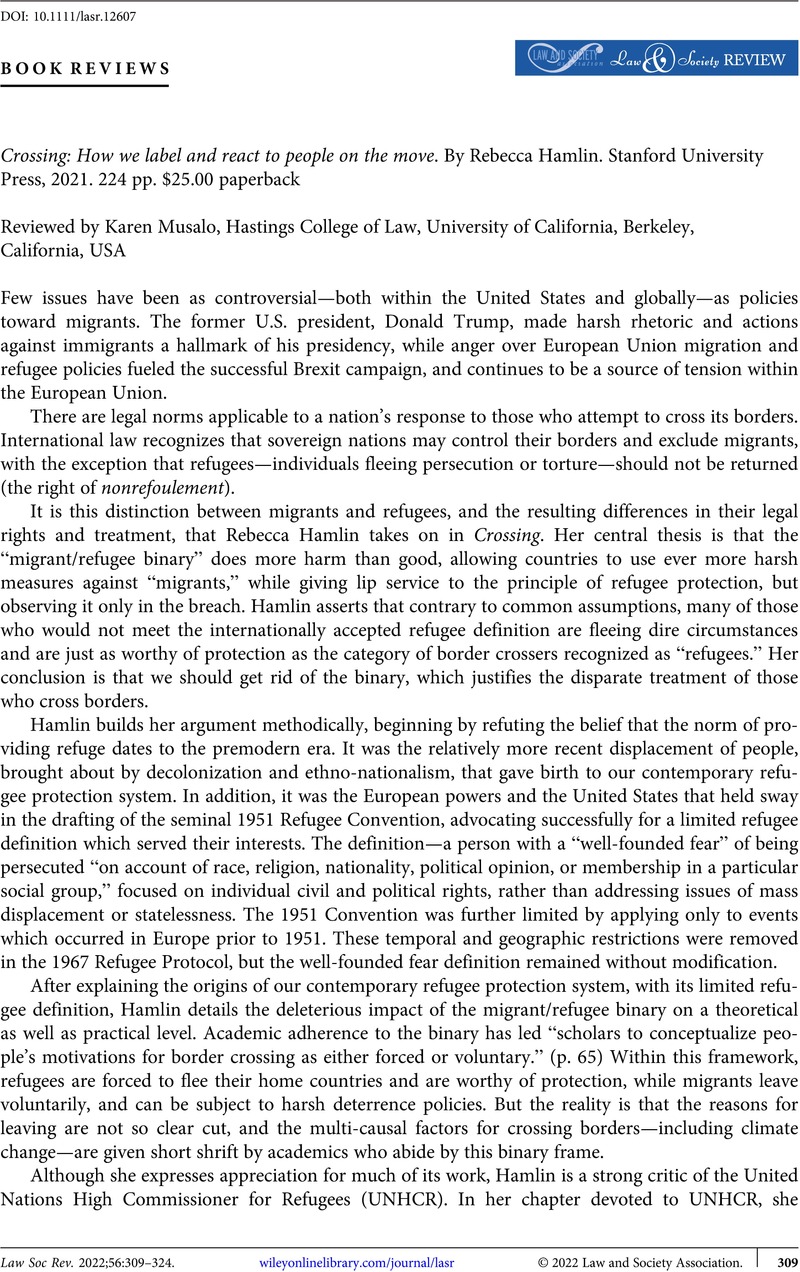No CrossRef data available.
Article contents
Crossing: How we label and react to people on the move. By Rebecca Hamlin. Stanford University Press, 2021. 224 pp. $25.00 paperback
Review products
Crossing: How we label and react to people on the move. By Rebecca Hamlin. Stanford University Press, 2021. 224 pp. $25.00 paperback
Published online by Cambridge University Press: 01 January 2024
Abstract
An abstract is not available for this content so a preview has been provided. Please use the Get access link above for information on how to access this content.

- Type
- Book Reviews
- Information
- Copyright
- © 2022 Law and Society Association.


